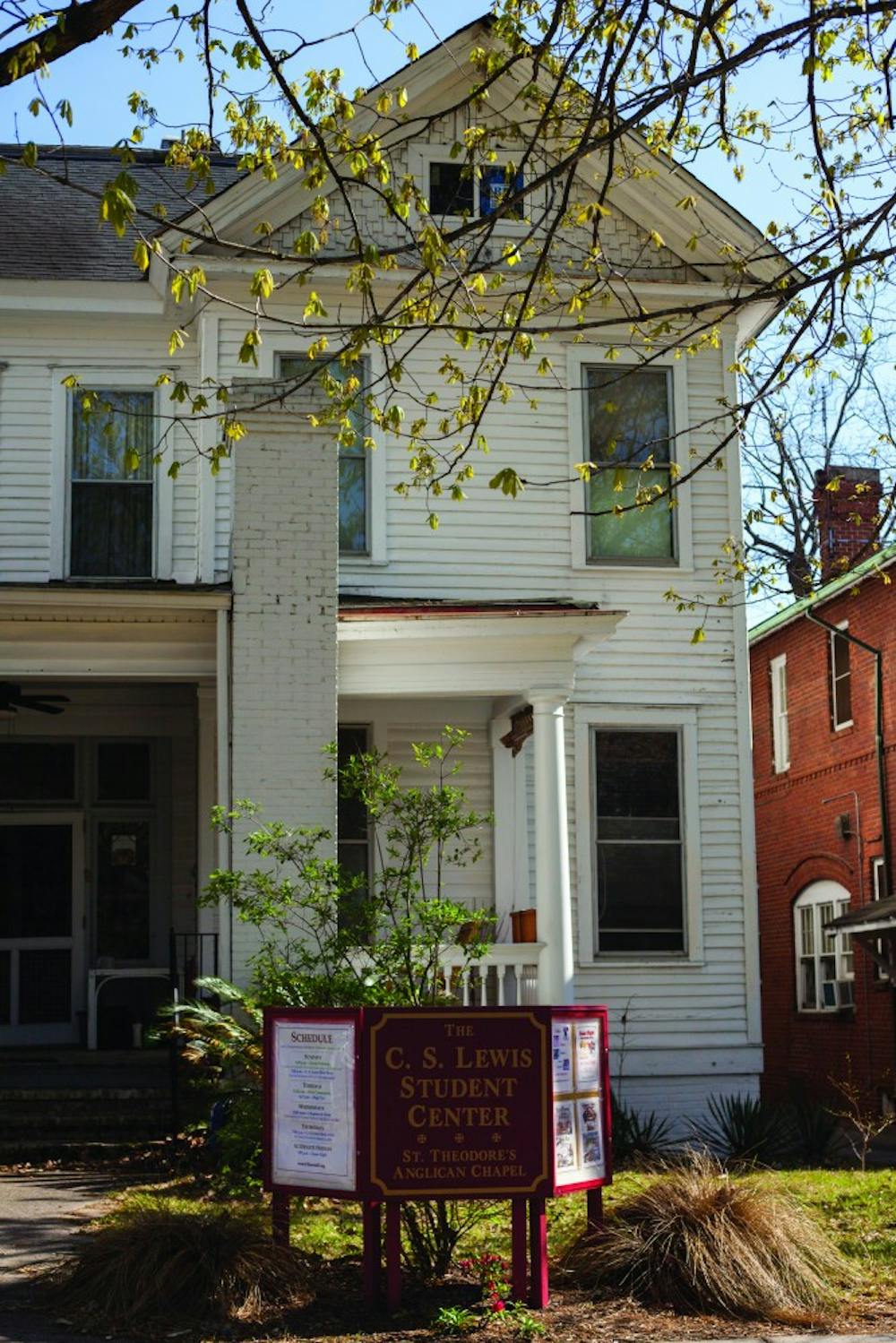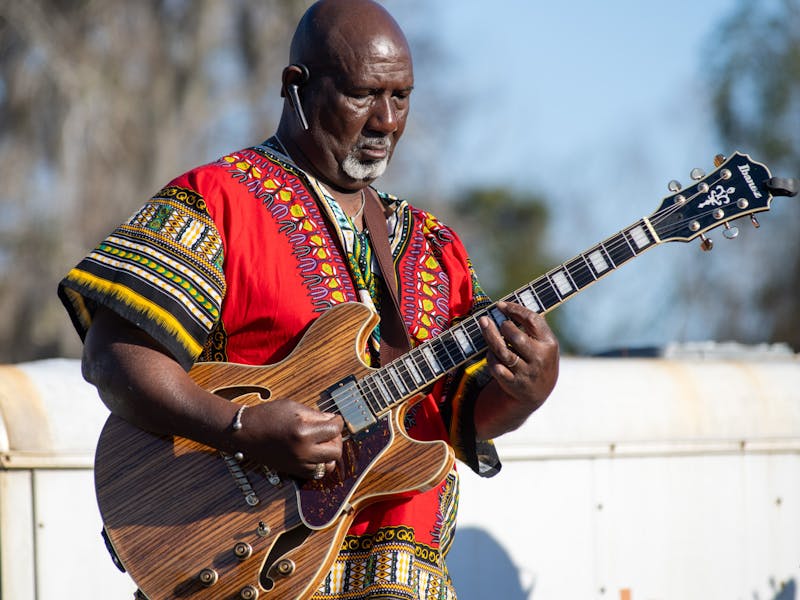A blonde stands alone outside an aging white house. It’s a grey day, with angry wind that sends the foliage littered across the unkempt yard rustling like petticoats across a tile floor. To her left, a paint-chipped porch swing moans from the ends of two rusty chains. To her right, a flowerbed of long-dead bushes that reach out onto the brick path like fingers. She makes her way up an old staircase to the front porch, each wooden step growling like a stray tomcat under her weight. She peels back the screen door and knocks twice, but there’s no answer. She turns the knob and it’s unlocked. She hesitates, then goes inside. It sounds like a bad scene description from an even worse horror movie, but it’s actually just how I decided to spend my Thursday afternoon: with a visit to the C.S. Lewis Center.
There have been questions in my head about the C.S. Lewis Center since I first saw the place on a tour during my senior year of high school. What is it? What do they do in there? Asking a handful of my fellow USC students about the place got me a lot of the same answers, things like “It’s that house on College Street, across from Capstone,” or “It’s a some kind of book club,” or most commonly, “It’s some kind of cult, right?” No one had been to any meetings. There are never any fliers up on campus or representatives on Greene Street. Just that big old monolith of a house.
So what’s their deal?
On Garnet Gate, the C.S. Lewis Center is classified as a religious organization. Sorry, Narnia fans. While the titan on children’s literature found his way into millions of hearts through his books about the world behind the wardrobe, the focus of this particular club is on his theological works, namely his book, Mere Christianity.
In the book, Lewis writes about aspects of Christian doctrine that unite all the major denominations--that Jesus Christ is died and rose again, that there exist certain universal principles of morality and ethics. He says that these are the ideas people of faith should focus on, the ones that create unity and common ground. The book was also revolutionary in that it calls out the elitism within Christianity, criticizing contemporary theologians and Christian academics for their exclusion of working men in religious discourse.
According to their website, attendees of the center explore these ideas among others presented in other works by Lewis at weekly book club meetings complete with free dessert and coffee. They have board game nights as well. They do service projects with Streetside Ministry, working to help the homeless of Columbia. They have a Facebook group full of active members. There are special services through the Anglican Church also housed in the center. Not a cult—just a tight-knit group comfortable in their own little bubble.
There’s something to be said for a religious community like this. Modern evangelism and the healthy way to go about it has always been a tough question to answer. Individual experiences with the traditional door-to-door/ accost-you-on-Greene-Street-with-doughnuts-and-fliers-about-youth-group methods range from really positive to downright intrusive, even with the purest of intentions. It’s nice to know there’s a place that waits for you to arrive on your terms, that isn’t going to seek you out and try to pull you in a direction you may not be comfortable with.
When I went into that aging white house, imagining something straight from a Hitchcock film, what I found was a living room full of old, plush couches arranged in a circle. A small kitchenette, the counter littered with mugs and K-Cups. Connect 4, Risk, Apples to Apples and so much more stacked neatly on a shelf in the corner. Bibles. Prayer requests scribbled on brightly colored sticky notes pasted to a door. A piano. Somewhere to be together. From the outside, it’s easy just to see all the eccentricities, for rumors to bubble up, but clearly for some people it’s those places that makes the best homes.



